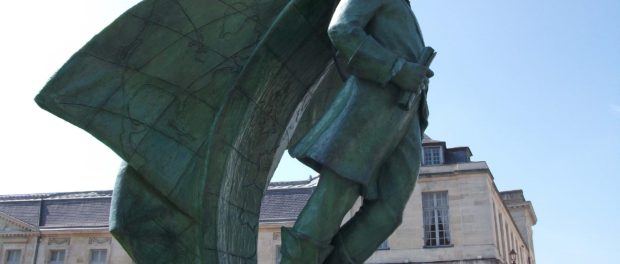1665-1666: New France’s First Census & Other Quebec Curios
The first filles du roi arrived in 1663, a government-sponsored initiative of bringing young women into the colonies to work, marry, and have children. It was actually the idea of Jean Talon, who needed to find a way to even out the gender imbalance of the colony and start families so that the people would not leave the colony. Talon was the Intendant of New France, one of the men with a large amount of power over the colony as a valued member of the Sovereign Council of New France, a government system under the watchful eye of the Finance Minister, Jean-Baptiste Colbert, and the French king himself, Louis XIV. We know by 1666, that New France had about three thousand people, but how do we know that exactly? This was another initiative of Jean Talon’s: we know this information due to the first North American census that Talon did himself.
Jean Talon, whom the king appointed in 1665, came to New France not soon after and took his duties as an administrator of civil matters seriously. Perhaps to ensure that the idea of the filles du roi was working, Talon set himself to the task of conducting New France’s first census in his first winter in New France, from 1665 to 1666. His method was not unlike what census-takers would do before the idea of fill-in forms: he went door to door, filling in information from the people he found there as to their name, age, occupation, and how they were related to the head of the household. Curiously, he did not include the religious workers or the number of Native Americans in the area. His final statistics showed that the gender ratio had since come down to two men for every woman, with about 3215 people living in New France. Out of these people, there were already various merchants who had settled here, established professionals in the colony, such as notaries and surgeons, a vast array of tradesmen such as barrel makers and carpenters, and even people involved in running schools. According to his count, most of these people, about 2100 people, lived in the settlement in Quebec.
After conducting the census, Talon used the information he collected to better the colony. One of the most concrete examples of the uses of his census was the fact that there were another hundred filles du roi that would arrive in 1666, the largest number of women to arrive since the king implemented government programme (there had been less than fifty women that had come between 1663 and 1665). As part of his initiative to encourage the population growth in New France, Talon also implemented a system that would reward large families and marriage: each marriage of men under twenty would get money as a reward for marrying early, and there was even an annual reward of 300 livres to households that had ten children born in wedlock. To families that had twelve children, Talon awarded them 400 livres. One livre was the monetary equivalent of the cost of one pound of silver, a system established by king Charlemagne. With the price of silver today being about twenty dollars per one ounce, if we were to convert this measure into pounds using the Troy ounces measurement for precious metals, one pound of silver (that is, twelve ounces), would be two hundred and forty dollars. 300 livres would then roughly be the equivalent of 72 000$!
Figure out if Jean Talon walked around in your area by consulting his census data from 1666 (and more!) here. Data will require the installation of a software programme (Windows only), click here.






